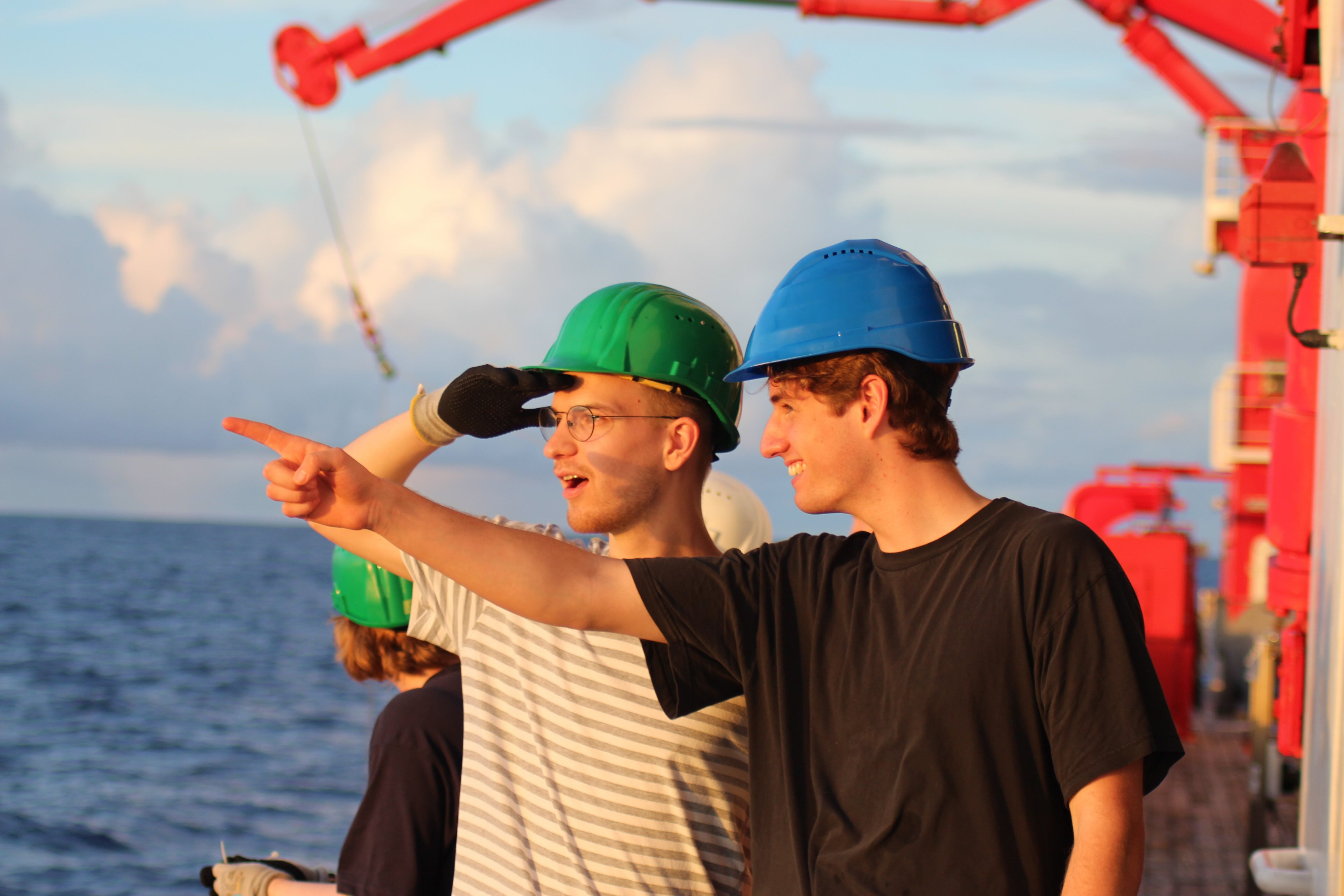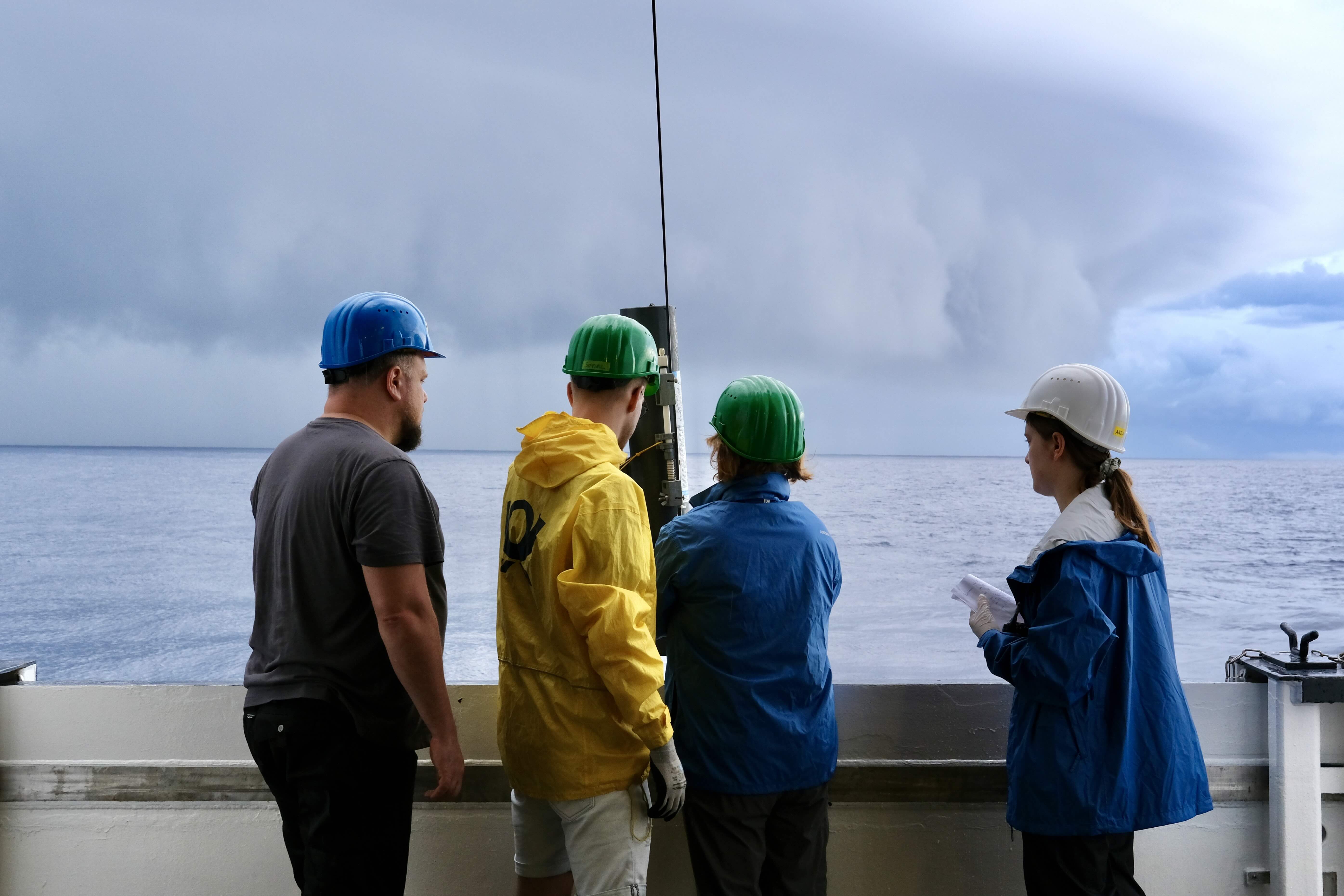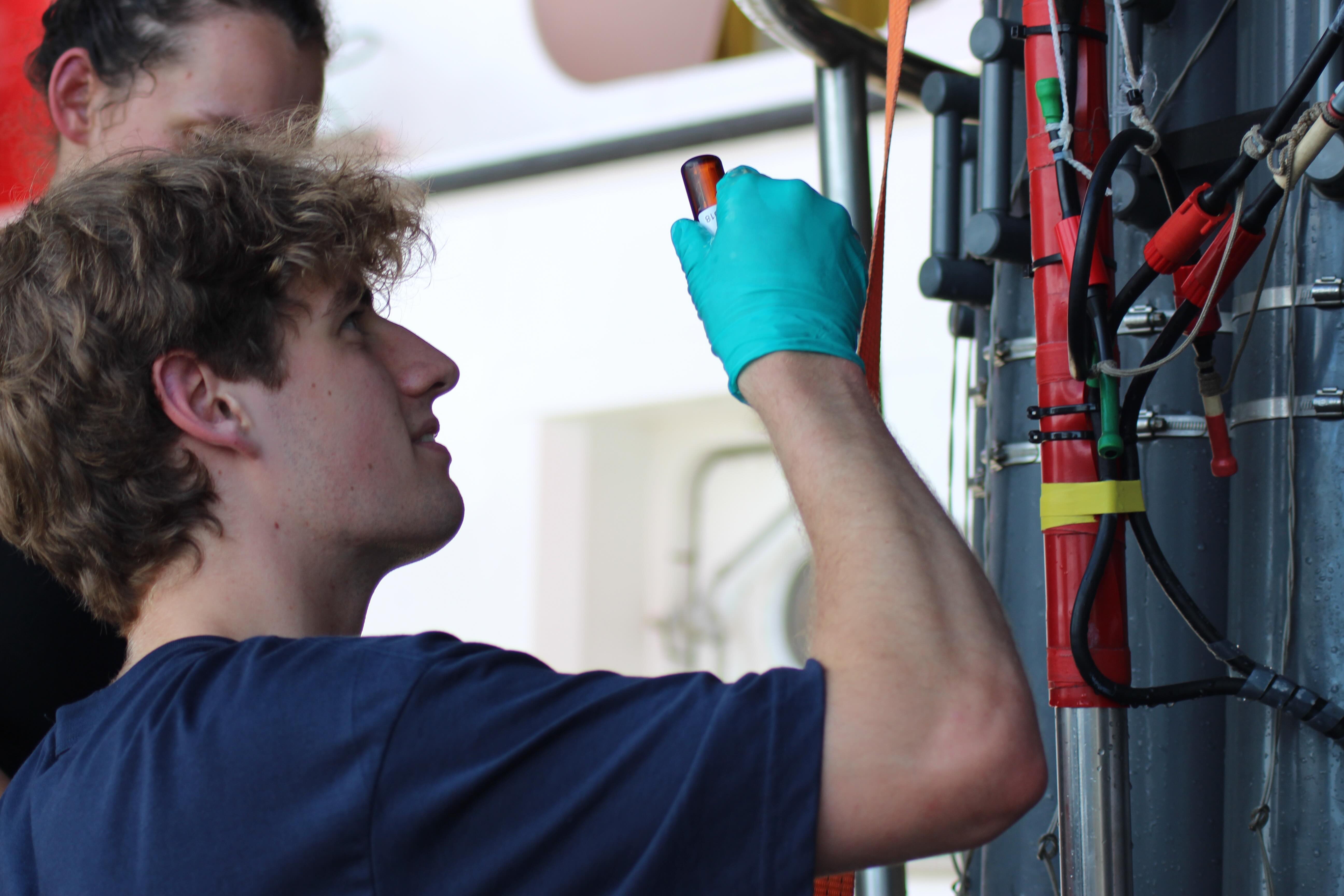By Albert Firus and Laurenz van Bonn (GEOMAR)

As the SONNE leaves the first measurement station around the equator behind and continues further into the Bay of Bengal, technicians, scientists, and crew on board are quite busy. While for some this is almost routine, such as our technician Mario, who is on his 36th cruise already, others are gaining their first experiences on board of a research vessel these days. This includes the two students Albert (26, Geosciences) and Laurenz (21, Environmental Sciences). Albert is investigating near-surface trace metals for GEOMAR in the marine biogeochemistry working group, and Laurenz, also on board for GEOMAR, is working the chemical oceanography working group on trace gaces in the water column, particularly the greenhouse gases N2O and CH4. The two have already spent the first two weeks on board of the SONNE and describe the different impressions of their first major research cruise:

Albert: “When out of the blue on a regular workday I was asked if I´d like to join the next expedition to the Indian Ocean, my jaw dropped. Ever since the beginning of my study, it had been a constant thought and dream to be part of research expedition. When I started working for GEOMAR, it seemed like this long-held dream was finally within reach, but it would take another year until it finally happened. I immediately thought ´yes!´ and so the preparations began for our departure in April 2024.
Due to various delays, the 39 scientists had time to get to know each other in Colombo. Already, the participants seemed very motivated and helpful. This impression solidified after the SONNE set sail south-eastward, crossing the equator.
In the first few days, I was getting used to the constantly swaying ship. It´s much larger than I expected. More than once, I got lost, but luckily the ship’s crew are helpful and ready to assist. The path that everyone probably memorizes first is the way to the mess. But that´s necessary because meal times are scheduled. The dishes are delicious, varied, and energizing for the frequent physical work. This work awaits us when we reach the next station. Sometimes we reach it a night, which means night shifts are in order. When there is no night shift, our cabins are cosy, and the sleep is restful. By now, the ship rocks me to sleep.
If the dizziness ever gets overwhelming, you find a nice spot by the window or, better yet, by the railing and gaze out intothe vastness of the ocean. The blue of the water is breath-takingly beautiful. The sunsets are causing my phone´s storage to dwindle. For those who want to see mover lively sights, after dark, you can try to catch a glimpse of pink and orange squids, flying fish, or jellyfish. When the day of the week become blurred due to night shifts and no weekends, you often forget which day of the week it is. The meal plan, fish on Fridays and the ice cream on Thursdays and Sundays remind you what day it is.

“So far, I only knew research vessels like the SONNE from lectures in university. I always thought how great it would be to be part of a cruise myself, and when I got the opportunity to join SO305, my excitement was immense. When we took the first step onto the ship in Colombo, it was a great moment, but also very exciting – after all, you don´t know what to expect in the next 6 weeks. All worries disappeared faster than they came, and that is mainly due to the amazing people involved in this cruise, the great colleagues, and the crew, who are all incredibly helpful and work together superbly. The first days were filled with new impressions, I have already learned a lot, not only scientifically, but also about the importance of organization and communication on board, about being able to find collaborative solutions to every problem. I am very much looking forward to learning even more in the coming weeks and delving deeper into the world of marine science. Whenever the workload and little sleep demand a small break, I sit down on the top deck, letting my gaze wander over the incredibly blue water during the day or to the starry sky, where at clear nights you can even see the milky way. It is a very special feeling to stand on deck and see nothing but water all around, only being able to imagine what is happening in the more than 4000 meters of water below us. Being involved in the exploration of this wonder is a great feeling, and I hope this is just the beginning, and that I will eventually go on a similar number of cruises as Mario has over time. The only wish I have for the rest of the journey is that a few whales pay us a visit – they´ve been pretty elusive so far.”